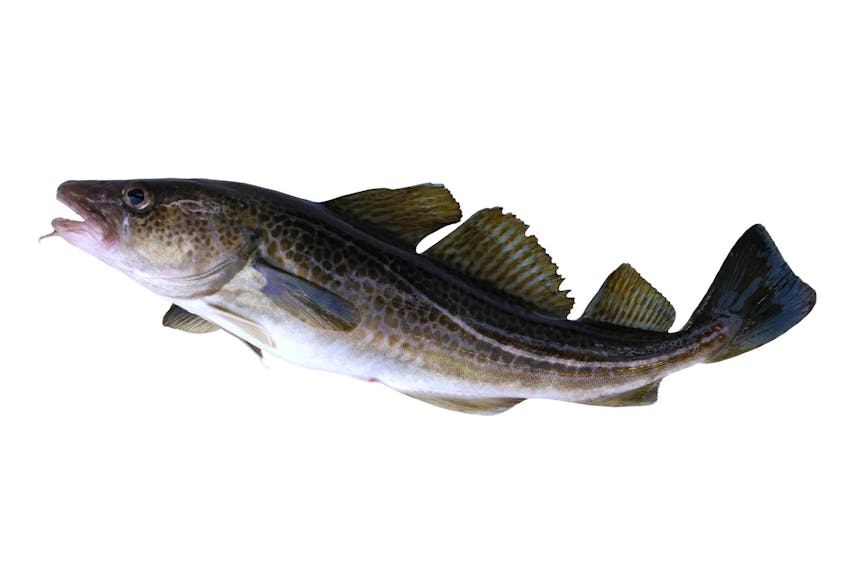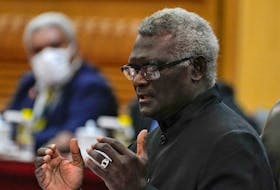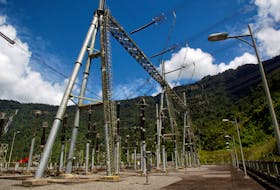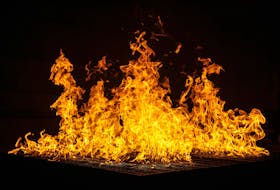Those in the province’s fishing industry hoping the northern cod would be ready for a commercial fishery in a few years’ time — a saviour to an industry suffering repeated blows from declining crab and shrimp stocks — better hold on to their hooks and nets.
Northern cod this year are in the same leaky boat, having declined significantly over the past year.
And that has come as a surprise to many because the northern cod stocks off the province’s east and northeast coast showed promising growth since 2012 — the first real glint of light since the dark and uncertain days of the northern cod stock collapse of the late 1980s and early 1990s.
At a technical briefing Friday morning in St. John’s, Karen Dwyer, Department of Fisheries and Oceans (DFO) stock assessment biologist for northern cod, said the northern cod spawning stock biomass has declined about 30 per cent from 2017 to 2018. A one-year projection shows a high probability of continued decline in the stock for 2019.
The overall stock level is at 37 per cent of the level needed to open a commercial fishery, Dwyer said.
A key reason for the decline appears to be natural mortality.
“It was unexpected based on the fact that we had been seeing a sustained increase, but there is always the potential to have these natural mortality events that can occur on a stock and it just drives the stock down,” Dwyer said. “Both caplin and shrimp, which are important food items for cod, are down and weights-at-age for cod are down, their biological condition has been poorer in recent years.”
The science advice to DFO resource managers: “removals from all sources must be kept at the lowest possible level until the stock clears the critical zone.”
“We would have to be outside the critical zone before we have a full-on commercial fishery, I think,” Dwyer said in response to questions from the media. “I really don’t have a timeline to give you. We are still in a better place (than the early 1990s) and we have to be cautious.”
Total landings from stewardship and other cod fisheries around the province in 2017 were 13,000 tonnes compared to 10,000 tonnes in 2016. It is not known how much cod is landed from the recreational food fishery.
Derek Butler, head of the Association of Seafood Producers (ASP) in the province, said it’s not the news the fishing industry had hoped for.
“Clearly, we are concerned,” Butler said. “There are a lot of variables here, a lot of factors at play. But that does not change the reality, the stock is back to the 2015 level, if not lower. That’s not the result we would have preferred.”
Butler noted that the last full DFO assessment for northern cod projections indicated the stock had a good chance of being at 60 per cent or more of the required amount to open a full commercial fishery.
“We had growth, we saw some increase, but clearly things have changed,” he said.
Butler said industry stakeholders will have to assess the ramifications of the science in relation to the upcoming fishing season.
The Fish, Food and Allied Workers (FFAW-Unifor) union has a more optimistic outlook.
The union noted the overall stock trajectory has been positive over the past 10 to 15 years, but there have been dips.
“While this news is not what fish harvesters had hoped for, these types of fluctuations are to be expected in any species that is recovering and is certainly not a cause for panic,” FFAW-Unifor president Keith Sullivan said. “Overall, the stock has grown from 25,000 metric tonnes in 2005 to 315,000 metric tonnes in 2017.”
Sullivan said there needs to be more focus on the impacts of predation on northern cod within the ecosystem, particularly by grey and harp seals, and that the federal government implement measures to track removals during the recreational fishery.
He said the union is taking steps to ensure the northern cod fishery is sustainable and responsibly managed, and is co-leading a Fisheries Improvement Project (FIP) for northern cod in division 2JK3L.
“The offshore fleet will undoubtedly lobby to scale back the inshore’s modest, sustainable stewardship fishery under the veil of conservationism, but let’s not forget it is the offshore that continues to operate draggers over pre-spawning aggregations in the extremely vulnerable 3Ps area,” Sullivan said.
The group challenging the FFAW-Unifor to represent the province’s inshore fish harvesters, however, has a more aggressive take on Friday’s northern cod science news.
The Federation of Independent Sea Harvesters of Newfoundland and Labrador (FISH-NL) says the dramatic decline in northern cod reflects “epic mismanagement.”
FISH-NL president Ryan Cleary recommends Ottawa initiate an independent investigation of DFO management in the Newfoundland and Labrador region and the department’s relationship with the FFAW-Unifor.
“Twenty-six years after the northern cod moratorium and the iconic northern cod stock is in worse shape, with no rebuilding plan or rebuilding targets, and inshore harvesters who can’t tell the difference between union and manager,” Cleary said.
“Most all commercial stocks off Newfoundland and Labrador today — including cod, caplin, shrimp and crab — are on the decline, and the common thread is management or lack thereof. No other commercial fisheries in Canadian history have suffered like those in Newfoundland and Labrador waters, and the reasons for it must be investigated.”
The Newfoundland and Labrador Groundfish Industry Development Council (GIDC) stated Friday that, according to DFO, the mortality rates from natural causes are at a high level and it encourages DFO to provide the necessary research to better understand the causes for that trend.
“The groundfish council remains committed to rebuilding this valuable resource to support the groundfish industry as well as coastal communities in our province,” said Paul Grant, executive vice-president of Beothic Fish Processors Ltd.
The Groundfish Enterprise Allocation Council (GEAC) and its members say they have been expressing concern since 2015 that the northern cod recovery was not assured, and that catch increases authorized by DFO were too aggressive and out of line with the department’s precautionary approach.
“Unfortunately, this significant decline comes only two years after DFO projected that the spawning stock biomass would double by 2019,” said Kris Vascotto, GEAC’s executive director. “Despite relatively low levels of younger cod, a changing environment and declining food supply (caplin and shrimp) that could slow the cod recovery, DFO implemented significant increases in catch in response to some industry groups, notably the FFAW and GIDC. It is distressing that some harvesters and processors made significant financial investments based on the 2016 projected growth in the cod biomass and the advocacy of groups who called for even higher catches than were approved by DFO.”
Alberto Wareham, president and CEO of Icewater Seafoods in Arnold’s Cove, says his plant and its 210 employees rely solely on cod, yet the company still encourages a conservative approach.
“There is a need to focus on the long-term, to be cautious and to go slow in our approach towards a sustainable recovery,” Wareham said. “The sustainability of the resource has to be the top priority.”








